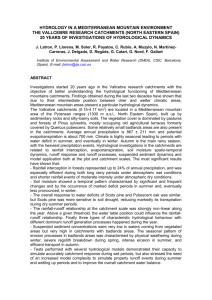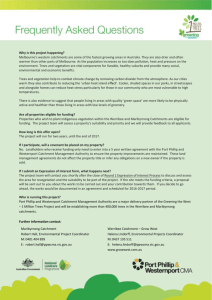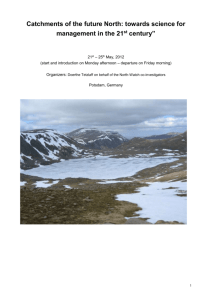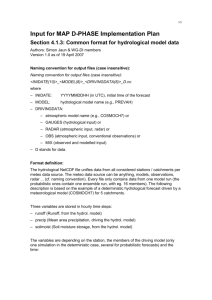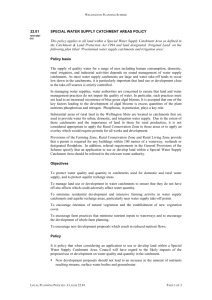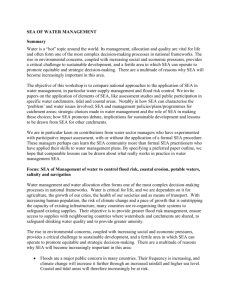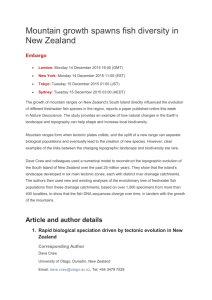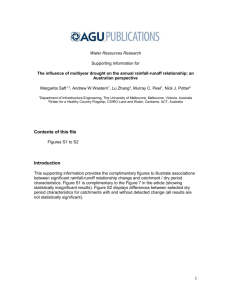The integration of economic, social and biophysical models to
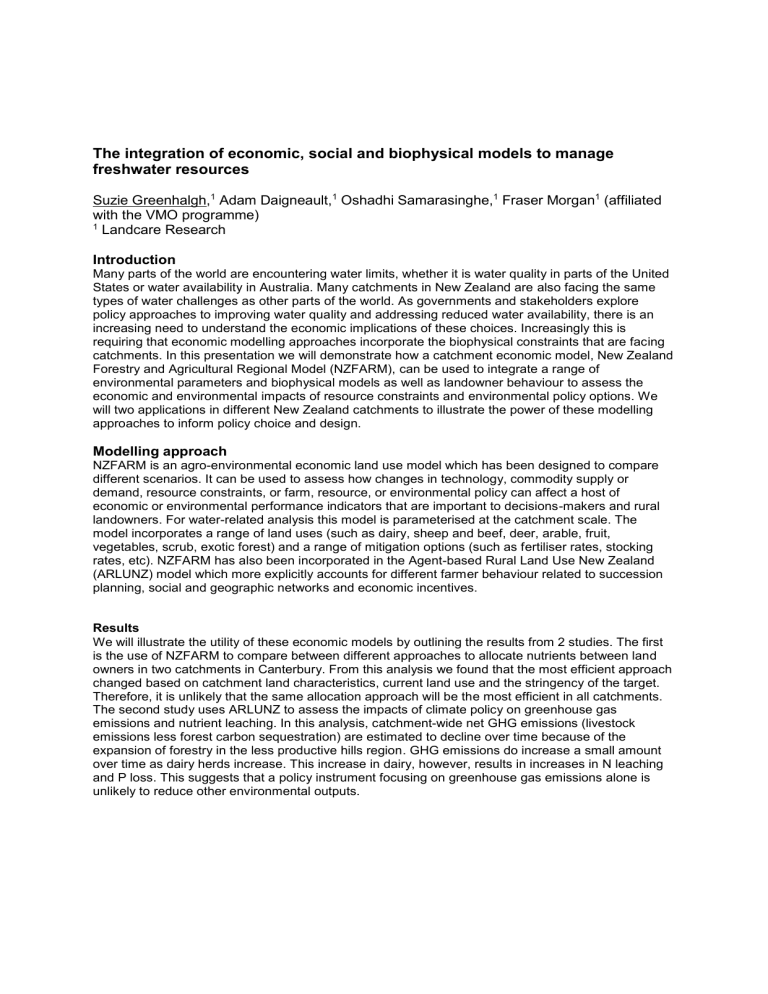
The integration of economic, social and biophysical models to manage freshwater resources
Suzie Greenhalgh,
1
Adam Daigneault,
1
Oshadhi Samarasinghe,
1
Fraser Morgan
1
(affiliated with the VMO programme)
1
Landcare Research
Introduction
Many parts of the world are encountering water limits, whether it is water quality in parts of the United
States or water availability in Australia. Many catchments in New Zealand are also facing the same types of water challenges as other parts of the world. As governments and stakeholders explore policy approaches to improving water quality and addressing reduced water availability, there is an increasing need to understand the economic implications of these choices. Increasingly this is requiring that economic modelling approaches incorporate the biophysical constraints that are facing catchments. In this presentation we will demonstrate how a catchment economic model, New Zealand
Forestry and Agricultural Regional Model (NZFARM), can be used to integrate a range of environmental parameters and biophysical models as well as landowner behaviour to assess the economic and environmental impacts of resource constraints and environmental policy options. We will two applications in different New Zealand catchments to illustrate the power of these modelling approaches to inform policy choice and design.
Modelling approach
NZFARM is an agro-environmental economic land use model which has been designed to compare different scenarios. It can be used to assess how changes in technology, commodity supply or demand, resource constraints, or farm, resource, or environmental policy can affect a host of economic or environmental performance indicators that are important to decisions-makers and rural landowners. For water-related analysis this model is parameterised at the catchment scale. The model incorporates a range of land uses (such as dairy, sheep and beef, deer, arable, fruit, vegetables, scrub, exotic forest) and a range of mitigation options (such as fertiliser rates, stocking rates, etc). NZFARM has also been incorporated in the Agent-based Rural Land Use New Zealand
(ARLUNZ) model which more explicitly accounts for different farmer behaviour related to succession planning, social and geographic networks and economic incentives.
Results
We will illustrate the utility of these economic models by outlining the results from 2 studies. The first is the use of NZFARM to compare between different approaches to allocate nutrients between land owners in two catchments in Canterbury. From this analysis we found that the most efficient approach changed based on catchment land characteristics, current land use and the stringency of the target.
Therefore, it is unlikely that the same allocation approach will be the most efficient in all catchments.
The second study uses ARLUNZ to assess the impacts of climate policy on greenhouse gas emissions and nutrient leaching. In this analysis, catchment-wide net GHG emissions (livestock emissions less forest carbon sequestration) are estimated to decline over time because of the expansion of forestry in the less productive hills region. GHG emissions do increase a small amount over time as dairy herds increase. This increase in dairy, however, results in increases in N leaching and P loss. This suggests that a policy instrument focusing on greenhouse gas emissions alone is unlikely to reduce other environmental outputs.



